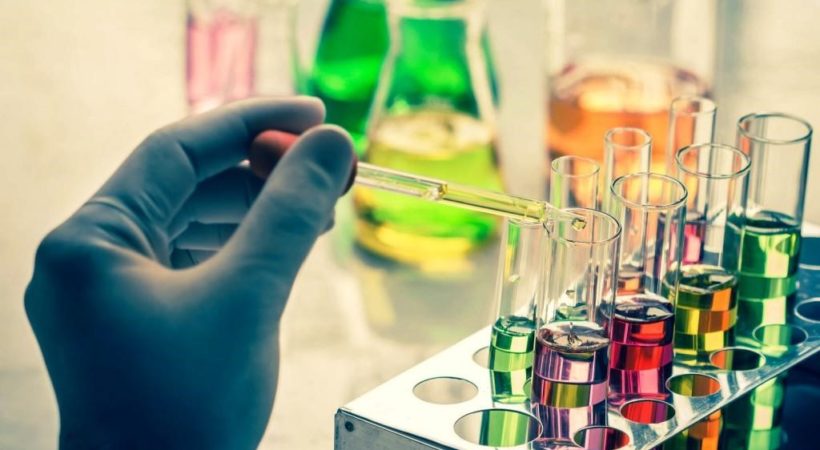Hormone level testing means that you measure the volumes of testosterone or the human growth hormone in your blood.
Let’s review what both tests suppose.
Testosterone Levels Testing
Diagnosing and confirming low testosterone requires thorough lab testing and careful interpretation of the results.
The first step in diagnosing testosterone deficiency is establishing whether a man has the classic symptoms. Guidelines released in 2010 by the Endocrine Society cited a list of “red flags” that raise the possibility of low T. These are low libido, erectile dysfunction, low sperm count, loss of body hair, and hot flashes.
Other signs that could prompt a doctor to suspect low testosterone are poor concentration and memory; feeling sad or blue; insomnia; decreased energy, motivation, initiative, or self-confidence; decreased muscle mass and increased fat; and diminished physical or work performance.
If the classic symptoms of low testosterone are present, the next step is to measure the level of testosterone in the blood. But determining if a man is truly deficient in testosterone is far from simple.
For one thing, total testosterone fluctuates quite a bit during the day. Testosterone levels are highest in the morning, although this effect is less pronounced in older men. To get the best result, physicians generally draw blood for testosterone lab tests between 7 a.m. and 10 a.m.
After measuring your testosterone, a doctor must determine if it is in the normal range.
To obtain a clear-cut diagnosis — either confirming low T or ruling it out — work with a physician who understands the complexities of testosterone testing and can interpret the results in light of a man’s symptoms. There is not one totally foolproof test or procedure. The physician should look at the big picture.
A careful evaluation could involve testosterone measurements for more than one day, as well as tests for levels of hormones related to testosterone. Don’t be afraid to ask for a second opinion of a specialist who deals with testosterone issues on a regular basis.
Possible Symptoms of Low Testosterone
According to the Endocrine Society, red flags for testosterone deficiency could include:
- low libido;
- erectile dysfunction;
- low sperm count;
- loss of body hair;
- hot flashes.
The Endocrine Society also suggests that doctors consider checking testosterone if a man is experiencing certain other signs, such as:
- poor concentration and memory;
- feeling sad or blue;
- insomnia;
- decreased energy, motivation,
the initiative, or self-confidence; - diminished physical or work performance;
- reduced muscle bulk and strength; increased body fat.
HGH Levels Testing
If a doctor suspects that your body may be producing too much or too little GH, they will order tests to measure the levels of GH in your blood. Identifying any issues related to GH will help a doctor make a diagnosis and determine the best course of treatment for you.

There are several different types of GH tests, and the specific testing protocol varies depending on which test a doctor orders.
As with all medical tests, it’s important to follow all of the preparation instructions from a healthcare team. In general, for GH tests a doctor will ask you to:
- fast for a specific period of time before the test;
- stop taking the vitamin biotin, or B7, at least 12 hours before the test;
- stop taking certain prescription medications a few days before the test, if they might interfere with the test results.
For some tests, a doctor may provide additional preparation instructions.
It’s uncommon for people to have GH levels outside the typical range, so GH tests are not performed routinely. If a doctor thinks the levels of GH in your body may be abnormal, they will likely order one or more of the following tests.
GH serum test
A GH serum test is used to measure the amount of GH in your blood when the blood is drawn. For the test, a healthcare professional will use a needle to collect a sample of your blood. The test itself is fairly routine and carries little discomfort or risk.
The blood sample will be sent to a lab for analysis. The results of a GH serum test show a doctor the level of GH in your blood at the single point in time when your blood sample was taken.
However, this may not be enough information to help a doctor make a diagnosis because levels of GH in your body naturally rise and fall throughout the day.
Insulin-like growth factor-1 test
An insulin-like growth factor-1 test (IGF-1 test) is often ordered at the same time as a GH serum test. If you have an excess or a deficiency of GH, you will also have higher- or lower-than-normal levels of IGF-1.
The key advantage of examining IGF is that, unlike GH, its levels remain stable. Only one blood sample is required for both tests.
The GH serum and IGF-1 tests don’t usually provide a doctor with enough information to make a diagnosis. These tests are usually used for screening so that a doctor can decide if further tests are needed. If a doctor suspects that your body is producing too much or too little GH, they will likely order either a GH suppression test or a GH stimulation test.
GH suppression test
A GH suppression test helps a doctor confirm if your body produces too much GH.
For this test, a healthcare professional will use a needle or IV to take a blood sample. Then you will be asked to drink a standard solution containing glucose, a type of sugar. This will taste slightly sweet and may come in different flavors.
A healthcare professional will draw several more samples of your blood at timed intervals during the two hours after you drink the solution. These samples will be sent to a lab for analysis.
In most people, glucose lowers GH production. The lab will check your hormone levels against expected levels at each testing interval.
GH stimulation test
A GH stimulation test helps a doctor diagnose an excess or deficiency in GH production.
For this test, a healthcare professional will generally use an IV to take an initial blood sample. Then they will give you a medication that triggers your body to release GH. The healthcare professional will monitor you and take several more blood samples at timed intervals over two hours.
The samples will be sent to a lab and compared with the expected GH levels at each time point after taking the stimulant.
Cost of GH tests
The cost of GH tests varies based on your insurance coverage, the facility where you have the tests done, and which lab is used to perform the analysis.
The simplest tests are the GH serum and IGF-1 tests, which only require a blood draw. The typical cost for each of these tests is about $70 if ordered directly from a lab. Your actual costs may vary depending on how much a healthcare team charges for services, such as drawing your blood and sending it to the lab.
Interpreting GH test results
A doctor will receive your lab results and interpret them. If your test results indicate that you may have a GH-related condition or if you require further testing, a doctor’s office will usually contact you for a follow-up appointment.
In general, the results of a GH serum test and an IGF-1 test don’t provide enough information to diagnose a disorder related to GH. If the results are unusual, a doctor will likely order GH suppression or stimulation tests.

If your GH level during a suppression test is high, it means that the glucose didn’t lower your GH production as expected. If your IGF-1 was also high, a doctor might diagnose an overproduction of GH. Because conditions related to growth hormone are rare and can be challenging to diagnose, a doctor might suggest additional tests.
If your hormone levels during a GH stimulation test are low, your body didn’t release as much GH as expected. If your IGF-1 level was also low, it may indicate a GH deficiency. Again, a doctor will likely recommend further testing to be certain.
The normal range for GH test results
For suppression tests, results below 0.3 nanograms per milliliter (ng/mL) are considered the normal range. Anything higher suggests that your body may be producing too much growth hormone.
For stimulation tests, a peak concentration above 5 ng/mL in children and above 4 ng/mL in adults is generally considered in the normal range.
However, the range for normal results may vary depending on the lab and a healthcare provider.
GH testing in adults
Adult bodies rely on GH to maintain muscle mass and bone density, and to regulate metabolism.
If you make too little GH, you may have reduced bone density and muscle mass. A routine blood test called a lipid profile may show changes in the levels of fat in your blood. However, GH deficiency is rare.
Extra GH in adults can cause a rare condition called acromegaly, which makes the bones thicken. Left untreated, acromegaly can cause a number of complications, including a higher risk of arthritis and heart problems.
The takeaway
GH levels that are too high or too low can indicate serious health conditions. However, it’s important to keep in mind that these conditions are rare.
A doctor may order testing to check your GH levels using a GH suppression or stimulation test. If your test results show unusual GH levels, a doctor is likely to order further testing.
If you’re diagnosed with a GH-related condition, a doctor will advise you on the best course of treatment. Synthetic GH is often prescribed to those with GH deficiencies. For both adults and children, early detection is important to increase the chances of a good outcome.
See what you can get for free by getting in touch with our doctors!

